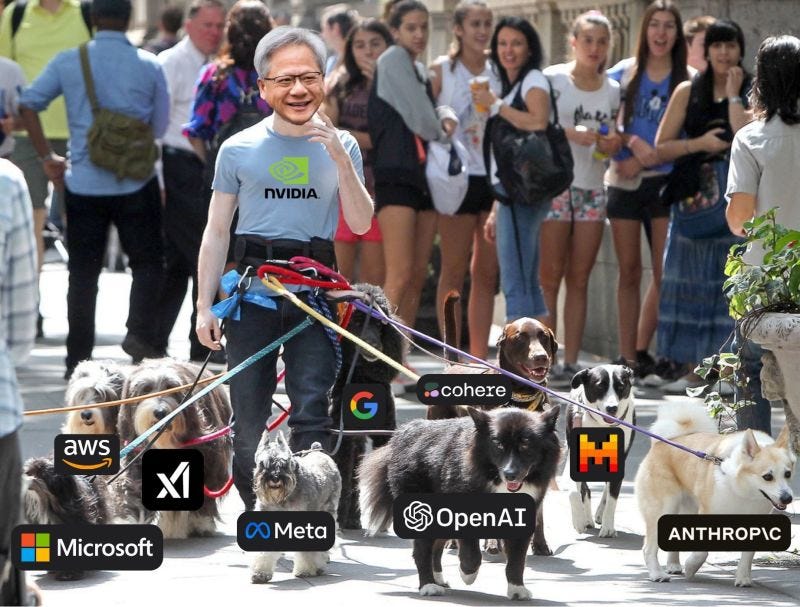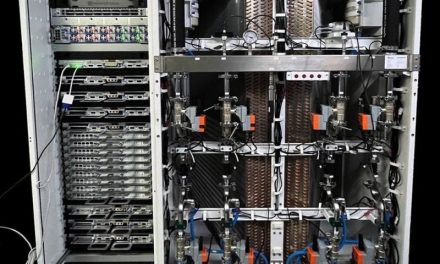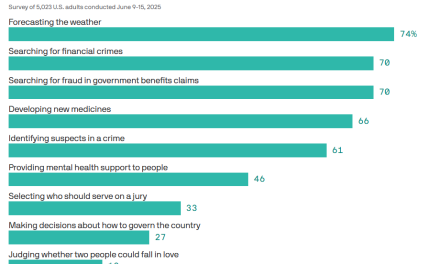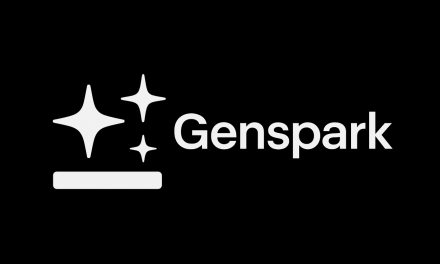“When everyone digs for gold, sell shovels”. – Jensen Huang
Apple Intelligence is late and other phone makers are racing to put AI features into them.
🌊 Anthropic keeps announcing incredible products and now Google’s Project Jarvis is going to augment Chrome browser.
Meta Platforms wants to say it too is a NotebookLlama maker. 🦙
OpenAI disbands yet another saftey team.
Apple Intelligence finally arriving in iOS 18.2.
Google’s NotebookLM has already been cloned –
Hey Everyone,
The Verge did a scoop saying that OpenAI would release their Orion model in December, whereupon a tidal wave of little AI news announcements followed.
(☝—💎For a limited time get a Yearly sub for just $5 a month✨— ☝).
Google DeepMind’s ‘Project Jarvis’ meanwhile would take over a web browser to carry out tasks on users’ behalf just like Anthropic announced with their Computer Use.
I’m an emerging tech analyst with Newsletters that cover things like AI, quantum computing, the semiconductor industry, AI chips and more.
Try Semiconductor Things – AI Chip and Semi News
This Newsletter goes out about every 2 weeks on Thursday morning EST. It gets you covered if you want to understand the semiconductor news cycle and supply chain better.
While people are dramatizing NotebookLM and Anthropic’s Computer Use, it’s not as if their competitors aren’t working on the same or similar things. These are also mere prototypes.
NotebookLlama: An Open Source version of NotebookLM 🙏
Meta’s Open-weight recipe is called NotebookLlama.
It uses L3.2 1B/ 3B for pre-processing the PDF, L3.1 70B for Transcript creation, L3.1 8B for re-writes and Parler TTS for Text to Speech
Step 1: Pre-process PDF: Use Llama-3.2-1B-Instruct to pre-process the PDF and save it in a .txt file.
Step 2: Transcript Writer: Use Llama-3.1-70B-Instruct to write a podcast transcript from the text
Step 3: Dramatic Re-Writer: Use Llama-3.1-8B-Instruct model to make the transcript more dramatic Step
4: Text-To-Speech Workflow: Use parler-tts/parler-tts-mini-v1 and bark/suno to generate a conversational podcast
Learn more on Github.
Meta has recently released NotebookLlama, an open (weight) version of Google’s NotebookLM that empowers researchers and developers with accessible, scalable solutions for interactive data analysis and documentation.
How does it sound?
OpenAI’s Orion Model
Some sources have said that OpenAI was planning to announce their Orion model in December, though the company appears to have denied the rumors.
It appears to be a premium B2B play following the o1 preview. OpenAI is planning to grant access first to companies it works closely with in order for them to build their own products and features, according to a source familiar with the plan.
Microsoft is going to host the model as of November even as their relationship has significant tensions amid various speculation about what kind of equity Microsoft will have in OpenAI as it pivots its corporate structure to in order to secure the latest round of funding. did a fairly entertaining deep dive on this.
OpenAI has to grow revenue at unimaginable levels just to stay afloat with all the cash it will burn in 2025 and 2026. In 2024, we don’t even know if OpenAI and Anthropic can become sustainable companies, much less the unprofitable ecosystem.
What is this Newsletter about?
You are reading AI Supremacy, where we explore AI at the intersection of business, society, culture and technology.
Image by Clark Miller studio.
Google Project Jarvis
The Verge staff were busy this weekend, The Information actually first reported that Google DeepMind would likely preview the project as soon as December. It’s basically their version of Anthropic’s Computer Use. Three companies appear deadlocked into AI product innovation at the frontier of Generative AI and they currently are as of November, 2024:
OpenAI
Google DeepMind
Anthropic
Project Jarvis, aims to automate various tasks within web browsers, specifically Google Chrome. What if SGE could actually do things for you? Well it appears the primary function of Project Jarvis will be to assist users by performing tasks such as gathering research, purchasing products, and booking flights directly through the browser interface.
The tool is aimed at helping people “automate everyday, web-based tasks” by taking and interpreting screenshots and then clicking buttons or entering text. Of course this sounds a lot like Anthropic’s Computer Use, and Google is a major investor in Anthropic.
It’s not exactly clear if there’s overlap between Computer Use and Project Jarvis, or what OpenAI and xAI will do to compete. The idea of harvesting more data with screen images however means a lot of things might become possible in terms of automating some tasks. Google Chrome data is a treasure drove for these kinds of capabilities.
It’s much more likely NotebookLM by Google gets cloned seriously than Google moves faster than Anthropic on Computer Use, and taking over the screen of consumers.
While ChatGPT is a category winner, Claude seems to be getting better at coding and pulling away at handling human instructions. Add more utility to it will be key. Project Jarvis might even be related to Anthropic’s research since they are a major investor.
Read about how Anthropic developed Computer Use here.
OpenAI’s AGI Team Disbanded
OpenAI thinks cost reduction means disbanding all of its saftey teams like Superalignemnt and AGI saftey. OpenAI is disbanding its “AGI Readiness” team, which advised the company on OpenAI’s capacity to handle artificial intelligence that could potentially equal or surpass human intellect and the world’s readiness to manage such technology.
Senior Adviser Miles Brundage has left the company and said some odd things while closing the door behind him. You can actually read about his perspective on Substack here:
“When you need precise, verifiable answers from data, Claude now works more like a real data analyst.”
Meanwhile Claude keeps getting trustworthy upgrades.
Anthropic Release “the Analysis Tool”
A lot of folk didn’t realize that on October 24th, Anthropic released the analysis tool. Many of Claude’s features are fine-tuned to B2B use cases, as ChatGPT as such a dominant B2C lead as a chatbot. More of Anthropic’s revenue comes from Enterprise AI.
🟢 Think of the analysis tool as a built-in code sandbox, where Claude can do complex math, analyze data, and iterate on different ideas before sharing an answer.
AI as a Data Analyst
How good is Claude, well it’s getting better.
🔵 When you need precise, verifiable answers from data, Claude now works more like a real data analyst. Instead of relying on abstract analysis alone, it can systematically process your data—cleaning, exploring, and analyzing it step-by-step until it reaches the correct result.
All of this makes Claude for Enterprise a lot more attractive:
The analysis tool in Claude.ai can expand capabilities across teams. For example:
Marketers can upload customer interactions across the full funnel and Claude will surface opportunities to improve conversions.
Sales teams can upload global sales data and Claude will provide country-specific performance analysis.
Product managers can upload customer engagement data and Claude will help inform sprint planning and development priorities.
Engineers can upload performance logs from various servers and Claude will identify areas for better resource utilization.
Finance teams can upload monthly financial data and Claude will create a financial dashboard to convey key trends and inform decision making.
A lot of news outlets and Newsletters didn’t cover the Analysis Tool in Claude, which is unfortunate. It’s a really great feature for actual utility from Generative AI.
Claude, which allows the chatbot to write and execute JavaScript code. This tool enhances Claude’s capabilities significantly, enabling it to perform complex data analyses and provide real-time insights directly within the chat interface. Claude’s code-execution will be hard to beat in terms of frontier capabilities as we head into 2025.
Microsoft and OpenAI Relationship Strain
Microsoft is losing badly to OpenAI, but they also invest and depend on them for a large amount of their actual research and product development. Microsoft has invested nearly $15 billion in OpenAI and via Azure credits.
What once seemed like a mutually beneficial partnerships has become yet another Silicon Valley drama. OpenAI hired Goldman Sachs to advise it during the process, and Microsoft brought on Morgan Stanley, the WSJ reported. Investors want Sam Altman to have up to a 7% stake in the company, and C-level executives have been leaving the company at record numbers.
While ChatGPT has thrived, the same cannot be said I don’t think for Microsoft’s sloppy Copilot era.
Read: Is BigTech Bungling Generative AI.
🌟📋🌱 (October, 2024)
Popular Articles on AI Supremacy
“Who to follow in AI” in 2024? 🎓
Prompt Engineering from 2020 to 2025 ✨
AI for Non-Techies 🛠️: Top Tools for Meeting Notes
Goldman Sachs and Economists are Backtracking on Generative AI’s Value
⛏ Tech ‘Bromance’ on the Rocks 🤔
Giving Sam Altman more equity likely means less for Microsoft, so it’s very problematic for Satya Nadella’s legacy. If OpenAI internally only thinks it can become profitable by 2029, that’s a massive maybe.
Since 2019, Microsoft has invested nearly $15 billion in OpenAI but its own products based on the same technology don’t seem very competitive or useful. Satya Nadella did more to super-charge ChatGPT and he’s getting paid for that but it sets up Microsoft as a likely AI loser for decades to come.
Nadella’s total compensation for 2024 rose to $79.1 million, marking a 63% increase from the previous year. According to Semafor, after OpenAI pays back Microsoft Microsoft is still supposedly entitled to a 49% share of OpenAI’s profits unless OpenAI has reached AGI, which has no real legal definition.
OpenAI is becoming hugely suscessful in Enterprise AI, and the moment OpenAI began selling AI services to businesses, this collaboration with Microsoft positioned OpenAI as a direct competitor to itself. The trade off of faster Azure growth with Enterprise B2B SaaS revenue and equity in OpenAI may not turn out that great.
An AGI Warning 🤖
“Neither OpenAI nor any other frontier lab is ready [for AGI], and the world is also not ready,” wrote Brundage, who spent six years helping to shape the company’s AI safety initiatives. – Verge quote
Elon Musk on Sam Altman
The bromance between OpenAI and Microsoft contrasts with the growing feud between Elon Musk and Sam Altman.
Read the Tweet by Miles.
Nvidia’s market cap now stands at 3.47 Trillion.
Altman is reportedly poised to receive equity in the company for the first time as OpenAI moves away from its longstanding nonprofit structure. How much he and Microsoft gets has yet to be finalized. Only two co-founders at OpenAI remain.
As OpenAI continues to gamble on the future in 2025 and 2026 with heavy losses, trust in its products may be in decline.
In May, OpenAI decided to disband its Superalignment team, and now in October its AGI readiness research is no more. For OpenAI 2024 is like a little death or a great undoing even as revenue soars and talent heads for the exit.
Brundage said Congress should ‘robustly’ fund the US AI Safety Institute to provide greater clarity on AI policy.
National Security Memorandum on AI 💎
On October 24th, 2024 the White House released the National Security Memorandum on AI which acknowledges the importance of American AI leadership in supporting national security objectives.
It’s clear the U.S. want to hoard this technology for their own National self-interests, national security and against strategic rivals for AI Supremacy. It might economically be hurting Europe and China.
Nothing about U.S. exceptionalism here, of course this memorandum outlines a comprehensive strategy aimed at ensuring that the United States leads in the development of safe, secure, and trustworthy AI technologies while addressing the associated risks to democratic values and human rights.
But how democratic is BigTech acting like monopolies picking the winners for the U.S. State and the Pentagon? Are these free-market values or democratic values in any way? I’m confused. Are Microsoft or Amazon picking the winners even what innovation is supposed to look like?
The memorandum emphasizes the need for the U.S. to maintain its leadership position in AI by enhancing domestic capabilities, particularly in semiconductor manufacturing and AI research. Is giving Billions to Intel, a failing company, an act of great forethought?
The CHIPS Act included giving $39 billion in subsidies for chip manufacturing on U.S. soil along with 25% investment tax credits for costs of manufacturing equipment, and $13 billion for semiconductor research and workforce training, with the dual aim of strengthening American supply chain resilience and countering China. Is this what fair competition for AI Supremacy looks like? Really. 🤔 It sounds like they listened to Eric Schmidt and his Venture capital interests. So is this tycoon or monopoly capitalism this version of Capitalism the U.S. is pushing now in 2024?
There’s a lot of unfair practices going on that limit the Eurozone and China greatly. It also creates more geopolitical unrest for U.S. interests to manifest. It puts the world at risks of heightening global conflicts. Like using U.S. based AI systems in Israel’s actions against its weaker neighbours.
The National Security Memorandum (NSM) on Artificial Intelligence, issued by President Biden isn’t a great sign of things to come. Experts have praised its comprehensive approach but expressed concerns about potential loopholes that could allow for misuse of AI technologies without adequate oversight. Who oversees U.S. exceptionalism in this point in history?
The U.S. does not appear like a great custodian this time around with this Generative AI technology. The US Federal Trade Commission (FTC) already announced it would be conducting an antitrust investigation into Microsoft, OpenAI, and Nvidia in June 2024. But if the State is working with these companies for National Security purposes, how much does that impact the so-called antitrust actions? The U.S.’s clutch and grab of AI Supremacy for its own national and economic interests might actually be fairly dangerous for the world at large.
Sam Altman has created a snakeoil quagmire around the race to AGI that is likely to destabilize the world further in the years to come with a tycoon impact even on American politics we see today. It’s hard to be a techno-optimist in a world where only the U.S. and only a few companies there seem to be reaping all the gains of Generative AI.
The NSM feels like Silicon Valley propaganda with the White House as the spokesperson, and it’s not a positive thing. The NSM’s fundamental premise is that advances at the frontier of AI will have significant implications for national security and foreign policy in the near future. The entire world is now at the mercy and is being held hostage of the AI Supreamcy policy of the United States. This is not about the good guys.
Path to AGI
How are we supposed to think of the path to AGI, Dr. Alan Thompson has some ideas on this.
Read his Substack here.
Alan is actually a YouTuber.
Below is Alan Thompson’s estimates of training costs, compute and duration of previous and those upcoming models such as Grok 3 and GPT-5.
Things are getting super expensive or super cheap, depending on how you look at it. Most AI policy or studies on AGI don’t take national rivalries, monopoly capitalism and geopolitics into consideration much.
Nothing lives in isolation, U.S. foreign policy and Tech policy has a bearing on the global economy and the risks of global conflict. This is the meaning and reference behind the name of my Newsletter, AI Supremacy.
Perplexity Consumer Adoption in October, 2024
While we have covered some of the news around Meta, Google, Anthropic and OpenAI let’s not forget about Perplexity.
Perplexity has served answers to more than a billion queries just this summer. And it’s still just the early beginning days for us.
They launched a native Mac OS app recently.
Perplexity then hit #1 on the iOS App Store.
Perplexity’s first native desktop app for macOS seems to have been a big hit with consumers.
How to get Earlier Access to Apple Intelligence 🍎
While Apple Intelligence is late and more limited than what we first thought, It’s possible to download the iOS 18.1 developer beta 3 (iOS 18.2) as a non-developer and grab new Apple Intelligence features as long as you’ve registered with Apple’s developer website and you have one of the following phones:
iPhone 15 Pro
iPhone 15 Pro Max
iPhone 16
iPhone 16 Plus
iPhone 16 Pro
iPhone 16 Pro Max
If you meet the requirements mentioned above, here’s how to download the iOS 18.2 beta 1:
1. Launch your iPhone’s Settings app.
2. Head to General, and then Software.
3. Select Software Update > Beta Updates. If you spot the iOS 18.2 beta 1, download and install it.
Read more about it here.
Impact of Apple Intelligence in 2025
While Apple have admitted internally to being behind in AI, few companies more than Apple can impact consumer opt-in to Generative AI features. Apple Intelligence is therefore good to watch to see if they can change perceptions of AI and its role in ordinary life for a large portion of users around the world.
Is iOS 18.2 finally when Apple Intelligence gets a more concrete first impression?
Image Playground: This new app allows users to create images quickly by selecting from three styles: Animation, Illustration, or Sketch. It can also be used within other apps like Messages for generating fun visuals based on prompts.
Genmoji: Users can create personalized emojis using simple text prompts. These Genmojis can be utilized in Messages as stickers or reactions, adding a fun element to conversations.
Image Wand: Integrated into the Notes app, this feature enables users to transform rough sketches into polished images using the Apple Pencil. Users can also select empty spaces to generate images based on surrounding context.
ChatGPT Integration: Siri has been enhanced with ChatGPT capabilities, allowing it to respond more intelligently and quickly to complex queries. This integration also includes a ‘Compose’ option for generating text using generative AI.
Visual Intelligence: Similar to Google Lens, this feature allows users to identify objects and learn more about them through their camera. Users can ask ChatGPT questions related to what they see in photos, enhancing the interactive experience.
Expanded Language Support: Apple Intelligence features will now support English in several regions outside the U.S., including Australia, Canada, New Zealand, South Africa, and the UK. first impression?
For many of us 2024 is perhaps not what we expected in the progress of Generative AI. If BigTech are the custodians of the new technology, the products have not been as impactful as some of us had hoped.
When clones, prototypes, late deliveries and White House propaganda around National Security priorities make up the AI News cycle, something is not quite as innovative as people are making it out to be.
Read More in AI Supremacy





